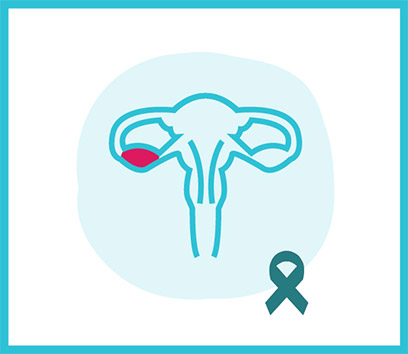Ovarian Cancer
There were 324,603 new ovarian cancer diagnoses worldwide in 2022.1 It’s estimated that 20,890 people in the U.S. will be diagnosed in 2025.2 Although ovarian cancer was thought to begin only in the ovaries (reproductive glands in the females), many ovarian cancers develop in the cells in the far end of the fallopian tubes (ducts that eggs travels through to reach the uterus).3
A few risk factors for ovarian cancer include4:
- Age: Most ovarian cancer diagnoses occur after menopause, and half of all ovarian cancers are in women who are ≥63.
- Personal or Family Health History: People with family history of ovarian cancer, breast cancer, or colorectal cancer are at higher risk. You’re also at higher risk if you were diagnosed with breast cancer.
- Family Cancer Syndrome: Up to 25% of people with ovarian cancer have inherited gene mutations (changes) that cause certain syndromes that can lead to cancer. The most common inherited syndromes are hereditary breast and ovarian cancer syndrome (HBOC), Peutz-Jeghers syndrome and MUTYH-associated polyposis. Other genes linked to ovarian cancer include ATM, BRIP2, RAD51C, RAD51D, and PALB2.
- Being Overweight or Obese
To learn more about ovarian cancer, please take a look through the resources we've curated for you by selecting the area you're interested in above.

